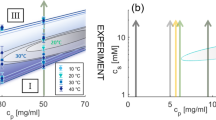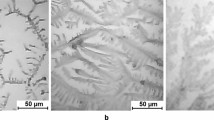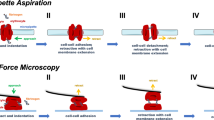Abstract
WHEN barium stearate or other hydrophobia powders are exposed to blood plasma they remove certain coagulation factors such as factor V1 and fibrinogen2, and their surface becomes hydrophilic. Barium sulphate, aluminium hydroxide and other hydrophilic particles adsorb other coagulation factors preferentially (prothrombin, factors VII, IX and X), but changes of wettability at their surface are less obvious. To indicate if one protein may have areas of less polarity by which it can attach itself to less-wettable substrates, leaving its more polar sites exposed, and vice versa, the relative wettability of thrombin and fibrinogen adsorbed on to glass and lucite was observed as follows.
This is a preview of subscription content, access via your institution
Access options
Subscribe to this journal
Receive 51 print issues and online access
$199.00 per year
only $3.90 per issue
Buy this article
- Purchase on Springer Link
- Instant access to full article PDF
Prices may be subject to local taxes which are calculated during checkout
Similar content being viewed by others
References
Vroman, L., J. Mt. Sinai Hosp., 25, 261 (1958).
Vroman, L., thesis, Utrecht (1958).
Lorand, L., Brannen, jun., W. T., and Rule, N. G., Arch. Biochem. Biophys., 96, 147 (1962).
Rothen, A., Ann. New York Acad. Sci., 53, 1054 (1951).
Author information
Authors and Affiliations
Rights and permissions
About this article
Cite this article
VROMAN, L. Effect of Adsorbed Proteins on the Wettability of Hydrophilic and Hydrophobic Solids. Nature 196, 476–477 (1962). https://doi.org/10.1038/196476a0
Issue Date:
DOI: https://doi.org/10.1038/196476a0
This article is cited by
-
Well-Adhered Ti Alloying Layer on NiTi Alloy: Surface Ni Content, Corrosion Resistance, and Cytocompatibility
Journal of Materials Engineering and Performance (2024)
-
Protein corona and exosomes: new challenges and prospects
Cell Communication and Signaling (2023)
-
Comprehensive and systematic characterization of multi-functionalized cisplatin nano-conjugate: from the chemistry and proteomic biocompatibility to the animal model
Journal of Nanobiotechnology (2022)
-
Emerging trends in self-polishing anti-fouling coatings for marine environment
Safety in Extreme Environments (2021)
-
Understanding the Lipid and Protein Corona Formation on Different Sized Polymeric Nanoparticles
Scientific Reports (2020)
Comments
By submitting a comment you agree to abide by our Terms and Community Guidelines. If you find something abusive or that does not comply with our terms or guidelines please flag it as inappropriate.



